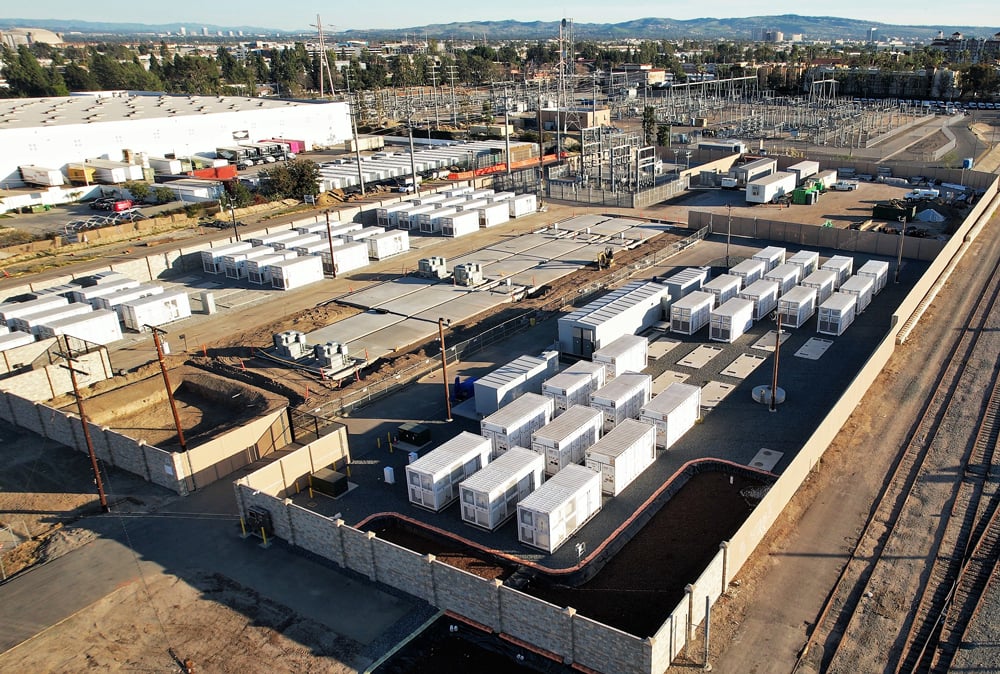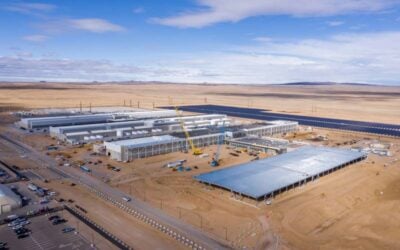
Tax incentives for energy storage included in the US’ Inflation Reduction Act could mean fewer solar-plus-storage hybrid plants are built, according to a specialist energy sector lawyer.
The key legislation would introduce measures targeted at lowering healthcare costs, encouraging domestic manufacturing and acting on climate crisis and energy security and cost issues.
Enjoy 12 months of exclusive analysis
- Regular insight and analysis of the industry’s biggest developments
- In-depth interviews with the industry’s leading figures
- Annual digital subscription to the PV Tech Power journal
- Discounts on Solar Media’s portfolio of events, in-person and virtual
In terms of the latter, that means US$369 billion investment and financing for everything from solar and battery manufacturing to the introduction of an investment tax credit (ITC) incentive for standalone energy storage.
As reported yesterday by Energy-Storage.news, the Inflation Reduction Act passed the Senate on Saturday and looks set for a speedy passage through the House and onto the desk of President Joe Biden for his signature as early as the end of this week.
Morten Lund, a partner at law firm Stoel Rives, has worked on energy and infrastructure projects across multiple technologies and now largely focuses on clean energy project development in California.
In an interview on the potential impacts of the legislation, to be published later this week, one standout point Lund was keen to emphasise was that incentivising standalone energy storage could disincentivise solar-plus-storage.
Typically known as hybrids, Lund said these combined power plants are “dumb” and make the deployment of energy storage where energy storage is most needed, “unnecessarily difficult”.
“The tax credit for [standalone] storage will unlock immense value from the batteries because – and this is why hybrid systems are dumb – in order to qualify for the ITC as a solar project, the batteries have to be essentially completely charged from the solar project and not from the grid. That means that the battery is not a ‘real’ battery, it’s a one-way battery.”
The ITC typically lowers the upfront capital cost of equipment purchases for projects by about 30%. There’s some give-and-take there, with the Inflation Reduction Act including adders for use of local unionised workforce and domestic content, for example, but generally, the reduction of required equipment CapEx by about a third is a strong driver to enable projects to go ahead.
60% of planned battery storage paired with solar PV
Statistics that emerged in March from the US government’s Energy Information Administration (EIA), found that more than 60% of a total 10GW of battery storage projects set to be deployed over the next two years in US utility service areas, are paired with solar PV.
Multi-year research by Lawrence Berkeley National Laboratory (Berkeley Lab) found that this rate of attachment is even higher in Western US states, with nearly all grid-scale solar PV planned in California including batteries in their design.
In an article for our quarterly journal PV Tech Power, Berkeley Lab researcher Will Gorman wrote that alongside the ITC, significant project cost declines in recent years have been a driver for hybrids, while sharing land, interconnection points to the grid and other infrastructure, lower the costs further.
However, Gorman noted, there is something called the ‘coupling penalty’ with solar-plus-storage, or even wind-plus-storage. That’s the difference in value between siting a battery storage somewhere it’s really needed, like a congested load pocket on the grid, with siting it next to or coupled with a generation source like wind or solar, purely because tax incentives make that commercially more viable.
Batteries can perform a number of different applications for the grid, up to about a dozen, such as frequency regulation, voltage support and VAR support. However, all of those things that can be done with a standalone battery energy storage system (BESS), can’t be done properly from a hybrid resources, because it can’t be charged from the grid, Morten Lund said.
“You’re limited in your ability to do anything other than time shift [solar or wind], because you can’t charge your battery from the grid,” Lund said.
“Once the batteries have its own ITC the shackles are off and the batteries can now provide full range of grid services, legally speaking. Let’s see what the [utility] contracts say, but it’s no longer hobbled by tax limitations. Not only will we see whatever natural form batteries the market wants, but there will literally be value created or at least unleashed by allowing the batteries to do their job properly.”
Do as grid engineers would do
Also important is what’s known as the locational value of energy storage. Another reason why the hybrids are dumb, according to the Stoel Rives partner, is that instead of siting batteries where the grid needs them, the batteries are placed where the solar project happens to be.
That may or may not be where the utility needs them most, Lund said. While batteries do provide some benefit in helping integrate renewable energy, “they would provide more value in some other location that the grid engineers would choose, because a battery is ultimately a grid device”.
“You’re kind of forcing the grid designer to put this device here, and not where it should go.”
Berkeley Lab’s research found that, depending on the location and other factors, there will be instances where hybrid solar-plus-storage projects make the most sense, and Lund agreed with that assertion.
“I’m sure there’ll still be some circumstances where hybrids will be or actually are the best design, they’ll still exist. But it just strikes me as bizarrely unlikely that they will be the dominant [configuration] if the engineers are allowed to just tell us what to do.”
It still depends also on what other stakeholders, like banks, utilities and regulators want to see from the industry, but Lund sees a standalone storage ITC’s introduction as a good step towards making the deployment of energy storage “less dumb, and less unnecessarily difficult,” the lawyer said.






